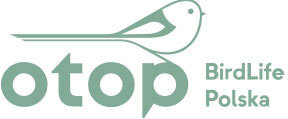Why does OTOP focus on farming and rural areas?
Since rural landscape covers 61.2% of Poland’s area and a relatively large portion of it is still under extensive farming, Poland plays an important role in the EU as a site for farmland birds. Poland is home to a large part of populations of many species that are typical of farmland, such as the White Stork (39.4% EU’s population), the Grey Partridge (38.8%), the Yellow Wagtail (34.5%), the Corncrake (28.6%) and the House Martin (19.7%). Farmland birds have recently been rapidly falling in numbers in the EU-15 states, with some populations going extinct completely. Therefore, effective bird protection in Poland could contribute not only to saving them in Poland but also throughout EU or even across the world. As they are attractive and recognizable, birds function as “umbrella species”, since their protection enhances the conservation of other important animal or plant populations. For the reasons mentioned above, OTOP‘s aim is to focus on ensuring adequate land use in rural areas, because without suitable protection of farmland habitats it is not possible to protect their birds.
What are the current main threats for farmland birds?
Rural areas are dominated by semi-natural habitats that arose as a result of human activities. Their existence and features are dependent on farming. The development of agriculture in Europe, especially its mechanisation and intensification have led to disappearance of habitats and species which adapted to living in rural landscape. However, contrary to the EU-15 states, the nature of farmland in Poland has retained its wealth. Nevertheless, this wealth has been constantly impoverished, particularly in the last 25 years. Following the transformations in the political system and the ensuing economic changes in the early 1990s, a large area of Poland saw cessation of farming. Uncultivated farmland was subject to plant succession and has gradually been changing into forest. This is especially undesired in the case of meadows and pastures of high natural value. Maintaining them is possible only by suppressing plant succession through mowing or grazing.
What does the Nature-friendly Farming campaign consist in?
Of the most threatened bird species, a numerous group is formed by those breeding in rural landscape. The current unfavourable changes in farmland use might cause this group to be joined even by species that have until now been perceived as common. With regard to the importance of rural areas for birds, OTOP has been performing a range of actions aiming at suitable protection of the birds of farmland and their habitats. These actions are identified by a joint logo of the campaign “Rolnictwo Przyjazne Przyrodzie” (Nature-friendly Farming). The campaign consists of a number of actions:
- Basic research and monitoring,
- Active conservation and demonstration farms,
- Training and information campaigns,
- Advocacy and legal actions.
Publications /in Polish/:

